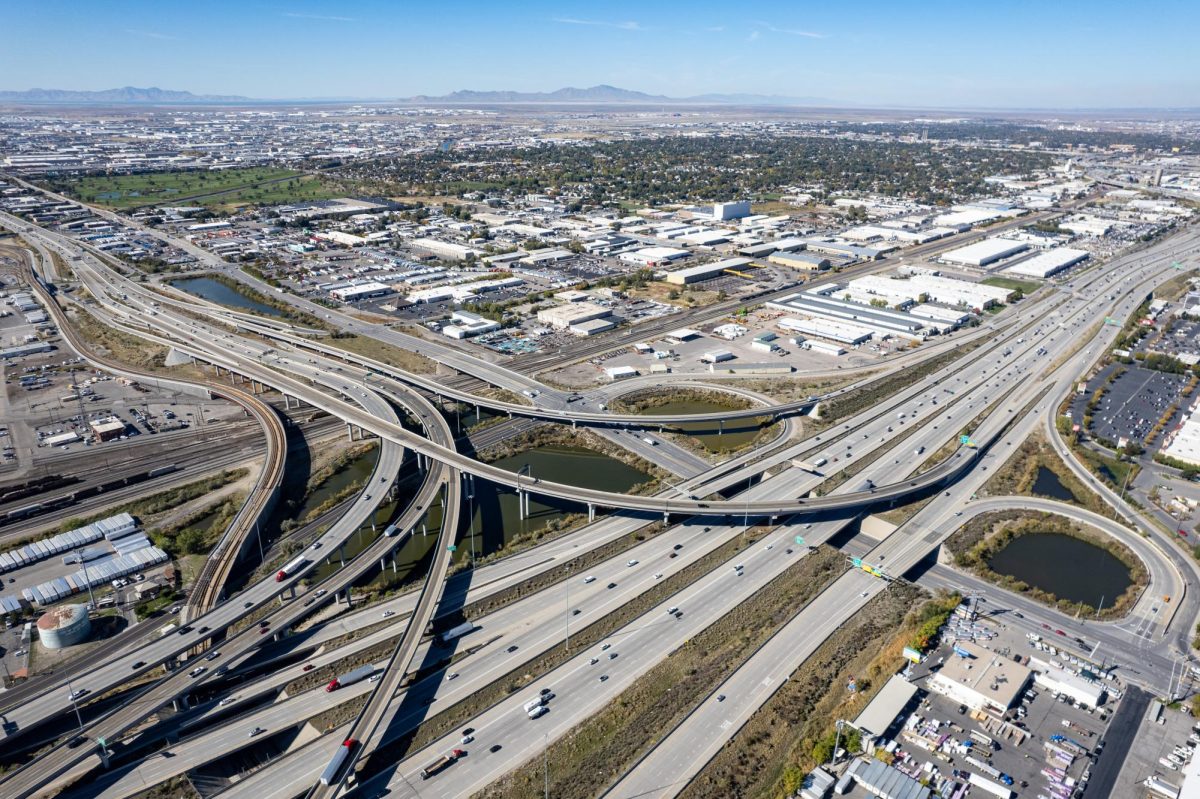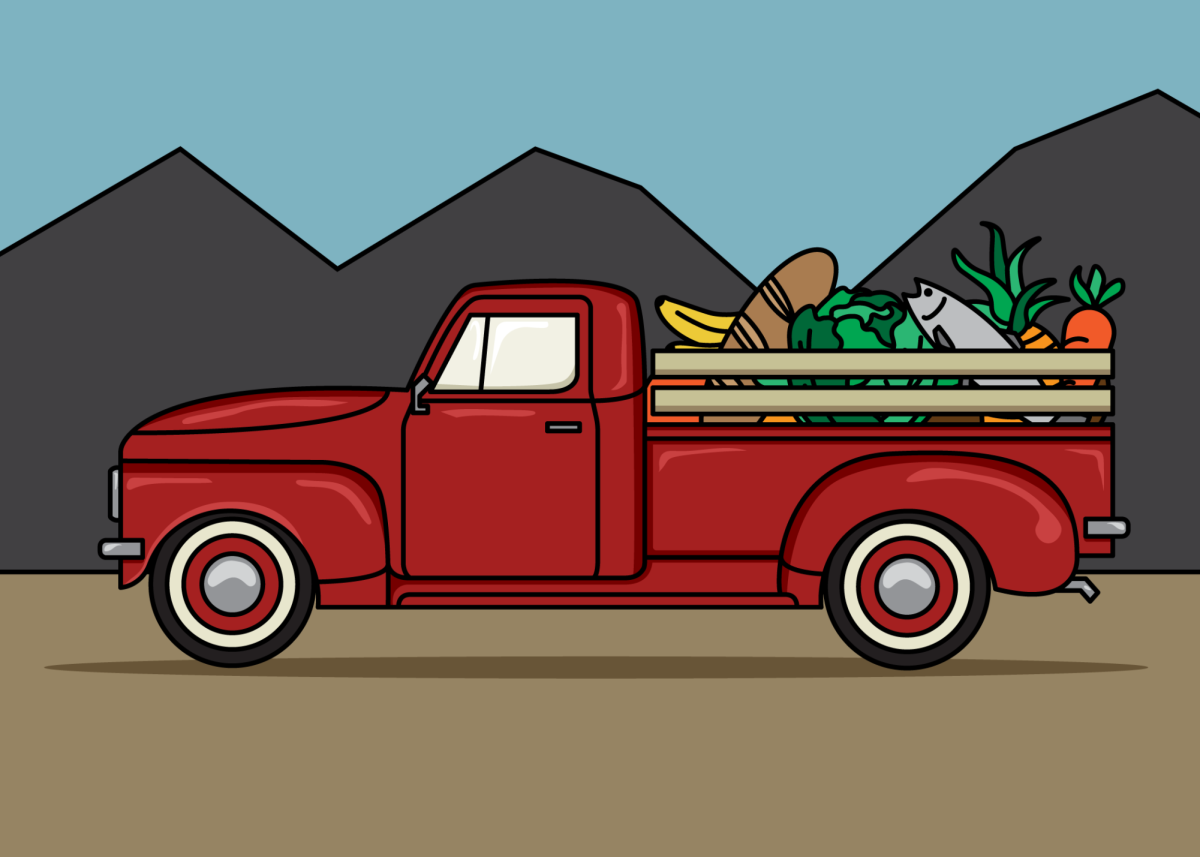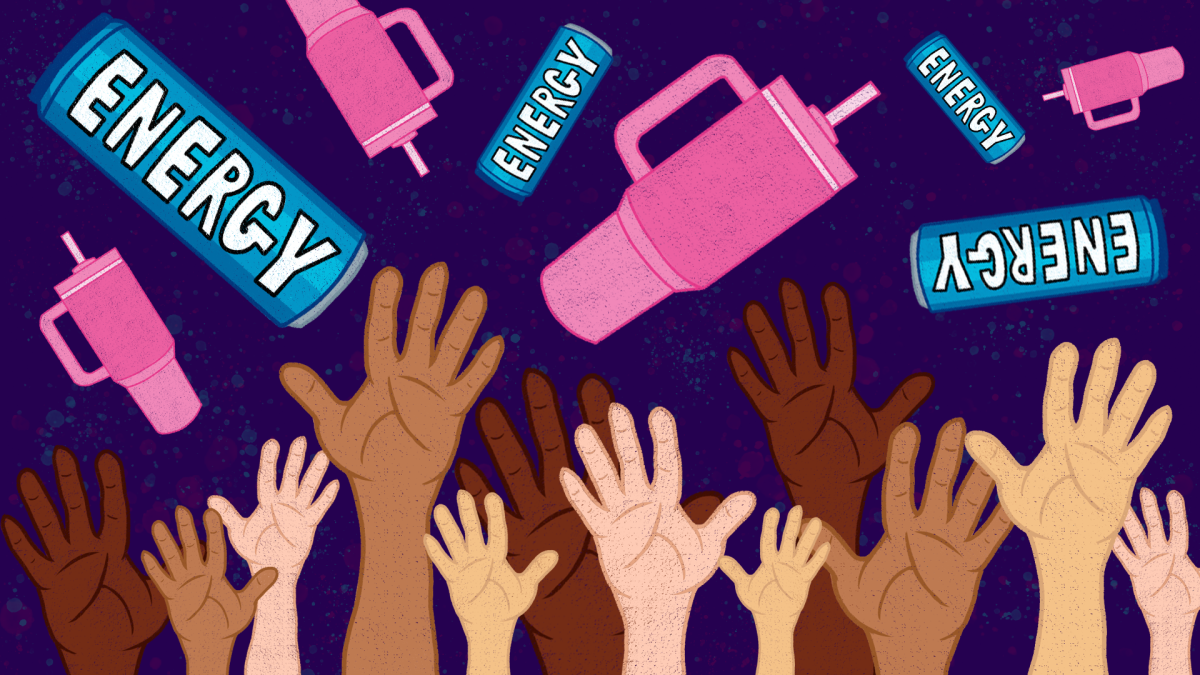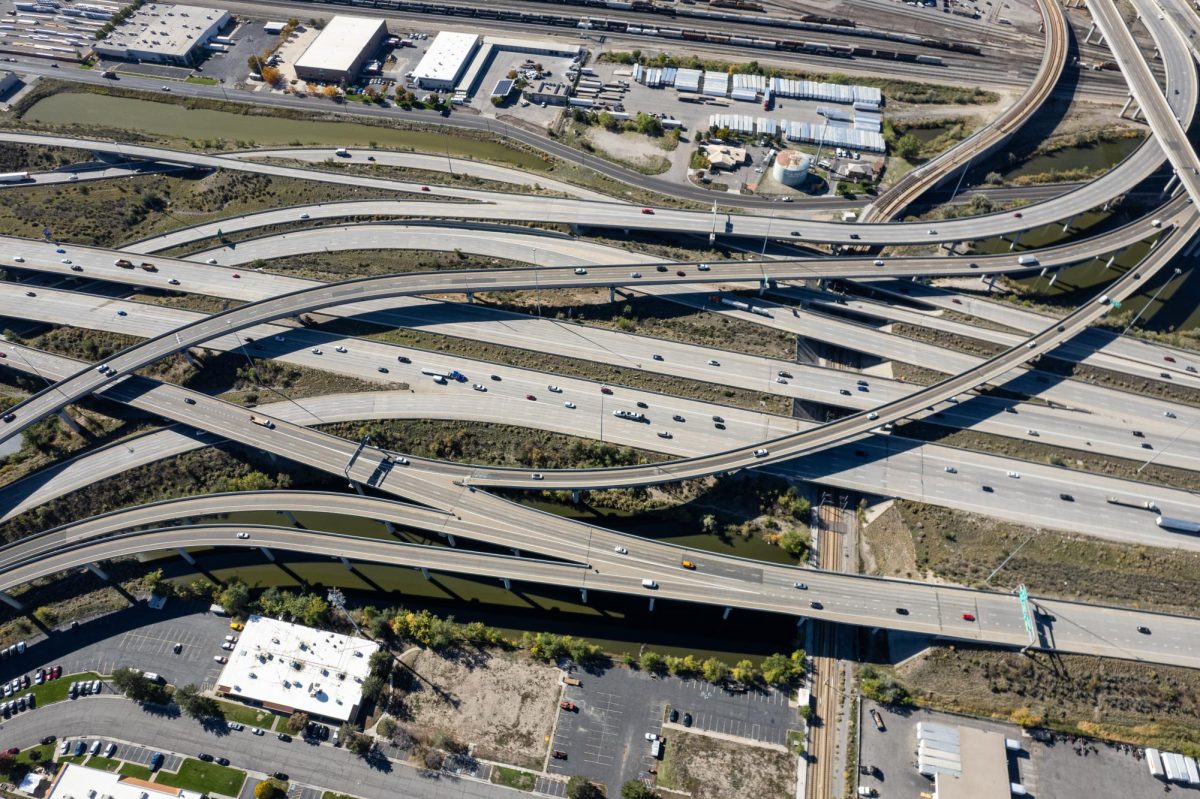As the Utah Department of Transportation’s proposed I-15 expansion inches closer, the situation grows dire. The expansion would cause immeasurable harm to communities in west-side areas.
Highways weren’t built to last forever. When change is inevitable, Utah should leave behind expansions and consider community-focused alternatives like burying the interstate or removing it entirely.
The Proposed Expansion
To accommodate future growth travel models, UDOT plans to expand 17 miles of I-15 from Farmington to Salt Lake City. Utah legislature approved $1.7 billion for project spending, although UDOT’s draft environmental impact statement estimated the project would cost closer to $3.7 billion. Additionally, U.S. highways cost billions of dollars per year to maintain, despite the harm they cause.
Governments build highways through cities as a tool for racism, reinforcing segregation and creating physical barriers to communities in predominantly low-income and Black neighborhoods.
Highways also contribute to environmental injustice. Salt Lake City’s west side, historically redlined and most impacted by the highway, faces “higher instances of pollution and associated health risks and socioeconomic risk factors that exacerbate them,” according to a recent EPA study. The I-15 expansion would only increase these hazards.
Community members vehemently oppose the project. This August, the Rose Park Brown Berets led residents on a bicycle cruise to protest along the proposed expansion site. The expansion will threaten their health, homes and community spaces and worsen their living conditions.
While in conversation with west-side communities, UDOT must consider alternatives to the violent interstate expansion it currently works toward.

Highways to Boulevards
Lauren Mayer is the Communications Manager for Congress for the New Urbanism and runs CNU’s Highways to Boulevards program, which works to reconnect highway-severed communities by reverting highway land into functional community space.
Mayer explained that most highways are reaching the end of their designated lifespans of 40 to 50 years, so figuring out what to do with them poses a timely issue. Many cities opt for multi-billion-dollar highway expansions, which don’t work to reduce congestion or traffic times.
She stressed the reality of induced demand — the theory that in the context of roads means highway expansions encourage people to drive more.
“Expanding a highway doesn’t fix the problems that politicians or local leaders want it to fix,” Mayer said. “They sit in construction traffic for a couple [of] years, and all of a sudden there’s some shiny new lanes, and then within a year or two they’re back to sitting in traffic.”
A better solution is transforming the highway into city streets, housing, and green space. There are a few ways to do this, depending on what type of highway cities already have.
Some cities demolish their highways completely, like Milwaukee did its Park East Freeway and Rochester, N.Y. its Inner Loop. Syracuse, N.Y. is tearing down Interstate 81 and replacing it with a community grid, which will reconnect neighborhoods and provide more accessible and safe pedestrian and bicycle facilities. Utahns can learn from this project that tearing down interstates in cities is possible.
For highways that lie below the city level, cities can “cap” them and build space on top, making the highways function like tunnels.
Highway burial, or rebuilding the highway underground, is also an option, albeit a rather expensive one. It preserves the flow of traffic while opening up community space. Boston’s Big Dig is an example of a — while imperfect — successful highway burial.
UDOT claims the burial of I-15 would necessitate demolishing homes to build an adjacent road and keep traffic flowing during construction. But this presents a false choice. For one, UDOT could increase public transit options before beginning demolition.
Mayer also mentioned that most cities have other roads besides the interstate that can handle the same traffic. So for a highway burial, there would be no need to build more roads during project construction. In the case of highway demolition, these routes also provide a long-term option for truck and semi-truck travel.
Utah must consider turning the highway into boulevards with the same effort and investment it uses to consider expansion. If done correctly, the long-term benefits of the project could help west-siders heal from the damage the highway has done.
A Community-Centered Approach
Utah must be careful with new solutions to prevent further gentrification, as Chronicle Opinion Editor Angela Lezaic argued. If UDOT chooses to bury or demolish the highway, it must involve community members at each step, allowing them to lead the project themselves.
“The most important thing right off the bat is being sure that you are involving the people most directly impacted and giving them a seat at the table,” Mayer said.
UDOT and the state legislature must also ensure they don’t prioritize the project vision over community needs. New development should support community priorities such as affordable housing and improving public transit.
Overall, UDOT must specifically favor west-siders and empower their current neighborhoods. It must make certain that residents who currently live near the highway can stay in their homes.
Mayer said that creating land trusts is one way to do this. The federal government must also put displacement protections in place prior to construction. However, there’s no one-size-fits-all solution, so it’s crucial to continually discuss with communities to reduce impacts.
Residents of Utah should consider transportation possibilities apart from expanding the highway. Better transportation and safer living conditions are possible, if only UDOT will listen to west-side communities and stop its current project.
Utahns can submit public comments about the proposed I-15 expansion until Nov. 13. We must continue to speak up against this project before it’s too late.




















Elke Brown • Oct 20, 2023 at 3:40 pm
Very important subject. Article is courageously and creatively written. Well done; leaves us with hope of inclusiveness .